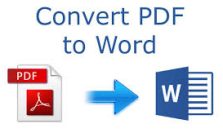Running out of storage but don’t want to lose your favorite apps? This step-by-step guide shows 25+ safe, reversible, and fast ways to reclaim space on iPhone and Android—using cloud offloading, smart cleanup of photos/videos, hidden cache removal, message attachment control, and simple automations that keep your phone lean for good.

Storage Overview & Safety First
Before any cleanup, understand what’s eating space and set up a safety net so you can reverse changes if needed.
Check Storage Breakdown
- iPhone: Settings → General → iPhone Storage → wait for analysis. Review categories: Apps, Photos, Media, System, Other.
- Android: Settings → Storage (may show categories like Apps, Images, Videos, Audio, System). On some devices tap “Free up space” or open Files by Google → Clean.
Create a Quick Backup
- Turn on photo backup (iCloud Photos, Google Photos, or OneDrive).
- For chats, enable cloud backups (WhatsApp → Chats → Chat Backup).
- Optional: connect to a computer and copy DCIM (camera) folder.
Tip: Keep at least 10% of total storage free. Phones perform better and updates install smoothly.
iPhone: Free Up Space Without Deleting Apps
iOS gives you powerful built-ins to reclaim storage without losing app data. Use these in order for maximum gains.
1) Offload Unused Apps (Keep Data)
- Settings → General → iPhone Storage → Enable Offload Unused Apps.
- iOS removes the app binary but keeps its data & icon. Tap icon later to restore instantly.
- Great for heavy apps used occasionally (video editors, games).
2) Optimize Photos Storage
- Settings → Photos → iCloud Photos ON → Optimize iPhone Storage.
- Full-resolution media lives in iCloud; device keeps lightweight previews.
- Ensure upload completed (Wi-Fi + charge) before large deletions.
3) Review Large Attachments
- Settings → General → iPhone Storage → Review Large Attachments.
- Sort by size; delete massive videos, PDFs, voice notes—conversation data stays.
4) Messages Auto-Purge
- Settings → Messages → Keep Messages → set to 30 Days or 1 Year.
- Settings → Messages → Low-Quality Image Mode to cut future bloat.
5) Safari & App Caches
- Settings → Safari → Clear History and Website Data.
- For third-party apps: open the app → in-app cache clear (e.g., TikTok/Instagram have “Clear cache”). If not available, use Offload App (keeps data) then reinstall.
6) Downloaded Media Cleanup
- Settings → General → iPhone Storage → look for Downloaded Music/Video.
- In Spotify/YouTube/Netflix: remove downloaded playlists/episodes you’ve finished.
Pro iPhone Tips
- Photos → Albums → Duplicates: merge to remove dupes (saves big space).
- Photos → Albums → Recently Deleted: empty to finalize space reclaim.
- Camera → Formats: High Efficiency (HEIF/HEVC) to halve future file sizes.
- Turn off constant Live Photos when not needed (icon toggle in Camera).
Android: Free Up Space Without Deleting Apps
Android gives flexible tools to delete junk while keeping your apps intact. These steps cover most devices (Samsung, Pixel, Xiaomi, etc.). Names may vary slightly by brand.
1) Clear App Cache (Not Data)
- Settings → Apps → [App] → Storage & cache → Clear cache (do not tap Clear storage).
- Great for social/video apps that hoard temporary files.
2) Files by Google → Clean
- Install/launch Files by Google → Clean → remove temporary files, duplicates, memes, and large files.
- Use “Free up space” after Google Photos backup to delete local copies safely.
3) Move Media to SD Card
- If supported: Settings → Storage → SD card → set Camera save location to SD.
- Move DCIM/Movies/Music folders to SD via Files app.
4) App Data Offloading
- Some OEMs: Settings → Battery & device care / Storage → Unused apps hibernation.
- Disable bloatware instead of uninstalling; re-enable anytime.
5) Downloads & Offline Maps
- Files → Downloads: delete old PDFs, ZIPs, installers.
- Google Maps → Offline maps → remove regions you no longer need or update with smaller areas.
6) Browser & Keyboard Cache
- Chrome → Settings → Privacy → Clear browsing data (cached images/files).
- Gboard → Settings → Dictionary/History → clear learned data if you need a deep clean.
Pro Android Tips
- Camera → set HEIF/HEVC if available. Use 1080p60 instead of 4K/8K for casual video.
- Telegram/WhatsApp → auto-clear cache after 3 days (in-app setting).
- Streaming apps (Spotify/Netflix/YouTube): lower download quality or store to SD if supported.
Photos & Videos: Biggest Space Hogs
Media usually eats the most storage. Back up first, then trim safely.
Back Up & “Free Up Space”
- Google Photos: Turn on Backup → when complete, tap Free up space to remove local copies while keeping cloud originals.
- iCloud Photos: Enable Sync + Optimize. Confirm progress in Photos status.
Hunt Big Files Fast
- Google Photos: Library → Utilities → Free up space, Clean up blurred photos, Review screenshots.
- iPhone: Albums → Videos, 4K, Slow-mo → delete or offload.
Delete “Invisible” Waste
- Screenshots & Screen Recordings pile up—clear monthly.
- Bursts/Live Photos you don’t need: keep one best frame.
- AirDrop/Share duplicates: use Duplicates (iOS) or Files by Google → Duplicates.
Compress or Convert Videos (Optional)
- Use a trusted compressor app to convert large 4K clips to smaller HEVC without major quality loss.
- Archive long raw footage to cloud/external drive, keep short edits on device.
Back up, then use “Free up space” to safely remove local copies without losing memories.
WhatsApp, Telegram, iMessage: Tame Attachments
Chat apps silently hoard gigabytes of memes, videos, and voice notes. Clean them without losing conversations.
- Settings → Storage and Data → Manage storage: sort by size, delete large items.
- Open a chat → contact name → Media, Links, and Docs → select & delete.
- Settings → Chats → Save to Camera Roll OFF (iOS) or disable auto-download (Android).
Telegram
- Settings → Data and Storage → Storage Usage → set Keep media to 3 days/1 week; tap Clear cache.
- Disable auto-download for large media groups/channels.
iMessage
- Settings → Messages → Keep Messages → 30 Days/1 Year.
- Settings → General → iPhone Storage → Messages → Review Large Attachments.
Signal/LINE/WeChat
- Check each app’s Data/Storage settings for cache limits and auto-download toggles.
Cloud Offloading (iCloud, Google Photos, OneDrive, Dropbox)
Cloud offloading gives you the best of both worlds: full library accessible, storage reclaimed locally.
iCloud Photos (iPhone)
- Settings → [Your Name] → iCloud → Photos → ON + Optimize iPhone Storage.
- Wait for upload → empty Recently Deleted to finalize reclaimed space.
Google Photos (Android/iOS)
- Enable Backup over Wi-Fi. After complete, tap Free up space.
- Use Utilities: Clean up space, Review blurry, Review screenshots.
OneDrive / Dropbox
- Turn on Camera Upload. Verify upload completed before deleting local copies.
- Organize by year/month so retrieval is easy later.
Cloud Hygiene
- Use Shared albums for events to avoid duplicate saving across family devices.
- Archive long videos/projects to cloud instead of keeping on phone.
Backup first. Then let your phone keep lightweight previews while originals live safely in the cloud.
Camera Settings that Save Space
Prevent bloat at the source with smarter capture settings.
| Setting | iPhone | Android | Effect |
|---|---|---|---|
| Formats | Settings → Camera → Formats → High Efficiency | Camera settings → HEIF/HEVC (if available) | Smaller photo/video files with similar quality |
| Video Resolution | 1080p60 for daily; 4K only when needed | 1080p/60 or 4K/30 selectively | Slashes file sizes for casual clips |
| Live Photos / Motion Photo | Toggle off unless you want short motion | Disable Motion Photo (Samsung) if not needed | Removes extra seconds per shot |
| Burst / HDR | Use sparingly; keep best frame only | Disable auto-save of all frames | Prevents duplicate stacks |
Files, Downloads, & Hidden Folders
Forgotten downloads and app work folders quietly expand over time. A quick audit frees surprising space.
Downloads Folder
- iPhone: Files app → Browse → On My iPhone / iCloud Drive → Downloads.
- Android: Files app → Downloads. Sort by size/date; delete old installers/archives.
Project & Editor Folders
- Video editors (CapCut, VN) and design apps (Canva) keep project cache. Export finals, then delete temp projects.
- Voice memos: archive long recordings to cloud.
Document Scans & PDFs
- Scanner apps store copies; move to cloud and remove local duplicates.
- Enable OCR to keep only searchable PDFs in cloud.
Hidden App Media
- Android: WhatsApp → WhatsApp/Media folders; clear Sent copies too.
- iPhone: review Files → app folders (On My iPhone) for leftover exports.
SD Cards & External Drives (USB-C/Lightning)
If your phone supports it, offload rarely used media to removable storage.
- Android + SD: Move DCIM/Movies/Music to SD via Files. Set camera default save location to SD.
- iPhone (USB-C / Lightning drives): Use a compatible flash drive; Files app → move large folders (Videos, RAW photos) out of device storage.
- Label drives by year or project for quick access later.
Automations to Stay Lean
A few small automations prevent storage creep.
iPhone Shortcuts
- Weekly reminder: open Photos → Albums → Screenshots to clear.
- Auto-save new scans to cloud, then delete local file.
Android Routines
- Files by Google → monthly “Clean” reminder.
- When connected to home Wi-Fi + charging → Google Photos backup.
Rule of thumb: If a folder grows every week (Screenshots, Downloads, Telegram), add a reminder or automation to prune it.
7-Day Storage Maintenance Plan
Follow this one time, then repeat monthly (takes ~30–45 minutes per month).
| Day | Action | Outcome |
|---|---|---|
| Day 1 | Enable cloud backup (iCloud/Google Photos/OneDrive). Start upload overnight. | Safety net set |
| Day 2 | iPhone: Offload Unused Apps; Android: clear caches for heavy apps. | +1–5 GB |
| Day 3 | Photos: use “Free up space” (Google Photos) or Optimize Storage (iOS). | +3–20 GB |
| Day 4 | Chats: WhatsApp/Telegram/iMessage—delete large attachments & set auto-limits. | +0.5–5 GB |
| Day 5 | Streaming/Maps: remove old downloads & offline maps. | +0.5–4 GB |
| Day 6 | Downloads/Projects: purge installers, duplicate exports. | +0.5–3 GB |
| Day 7 | Set 3 automations/reminders; adjust camera to HEIF/HEVC and 1080p default. | Future-proof |
FAQ
Will Offload App delete my data? On iPhone, Offload removes the app binary but keeps documents/data. Reinstall restores it. Always check each app’s sign-in requirements.
Is clearing cache safe? Yes—cache recreates itself. Avoid “Clear data” unless you want a full reset of that app.
Do I lose photos if I use “Free up space”? No, if backup is complete. Originals live in the cloud; the phone keeps previews (or redownloads on demand).
What if my phone says “System” is huge? After major updates, system data shrinks over days. Reboot, ensure >10% free space, and clean caches; avoid risky third-party cleaners.
Which is better: iCloud vs Google Photos? Use the one your ecosystem favors. iCloud integrates deeply with iOS; Google Photos has powerful AI and works cross-platform. You can even use both.



TikTok, Instagram, YouTube, Spotify, Maps: App-Specific Cleanups
Media and navigation apps cache lots of temporary data. Clear it regularly without losing your account or playlists.
TikTok & Instagram
YouTube / Netflix / Prime
Spotify / Apple Music
Google Maps